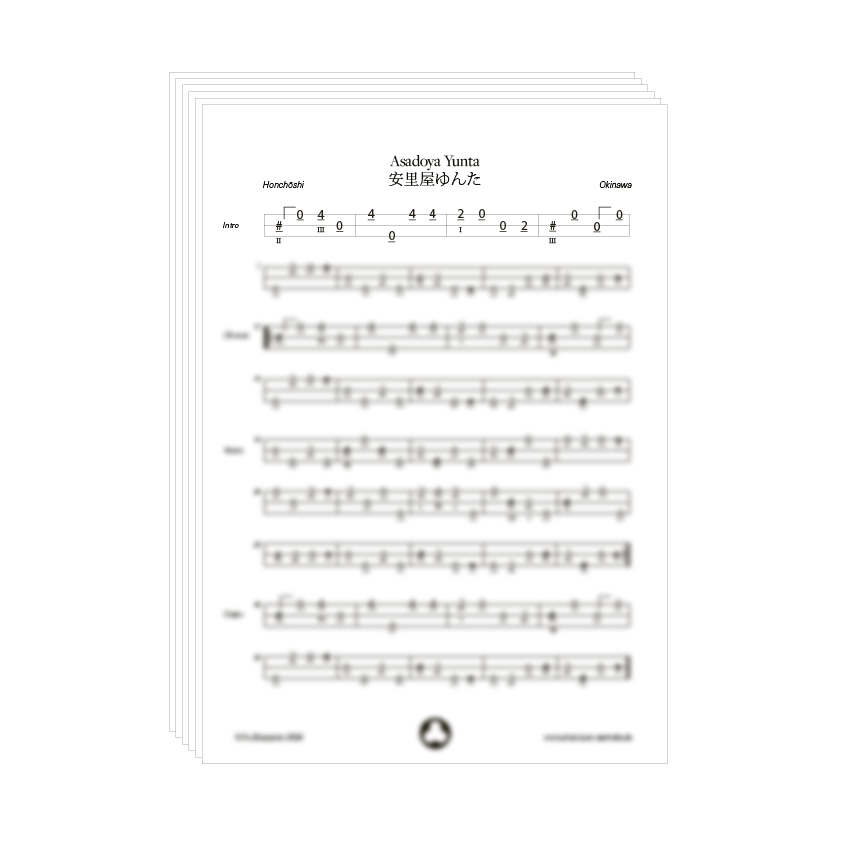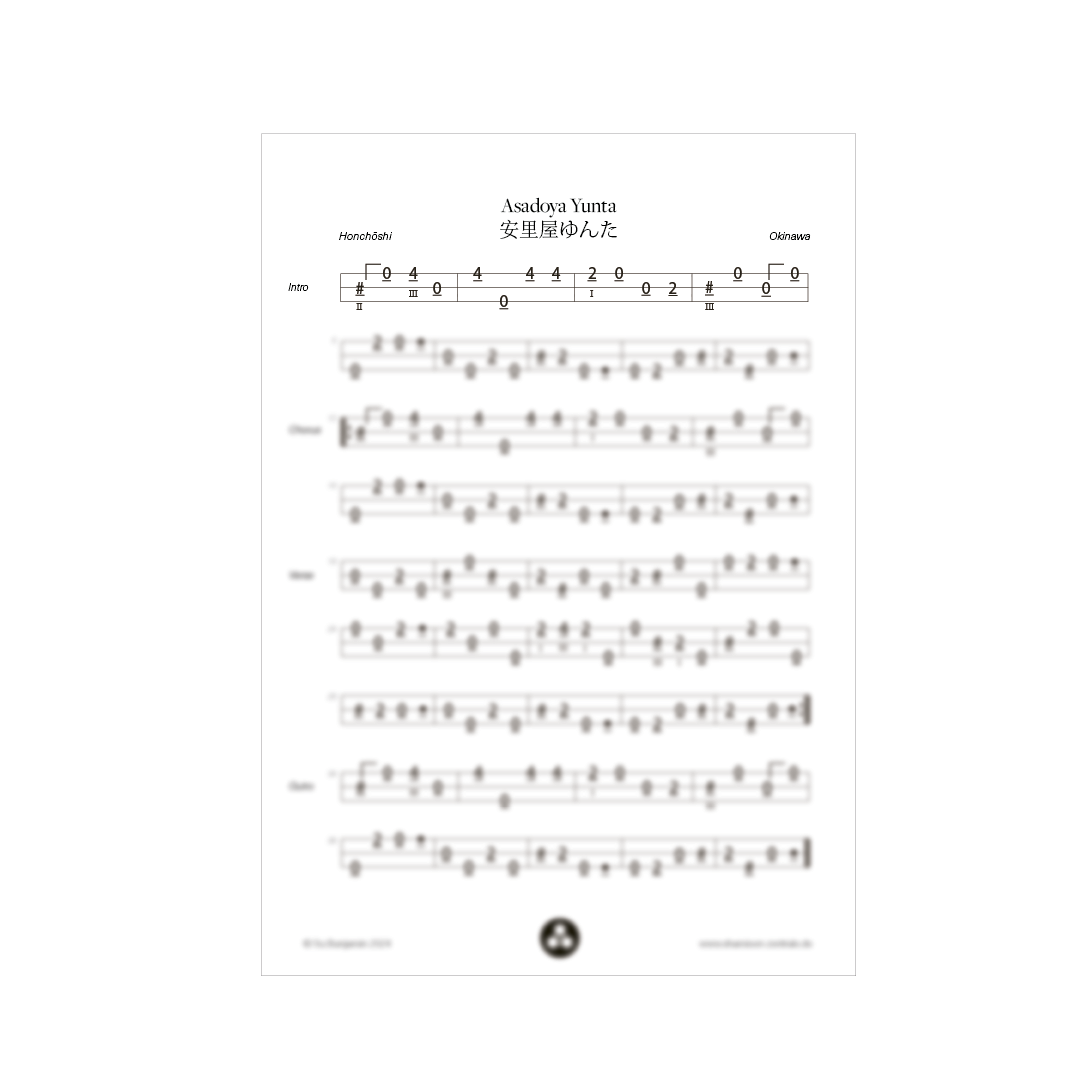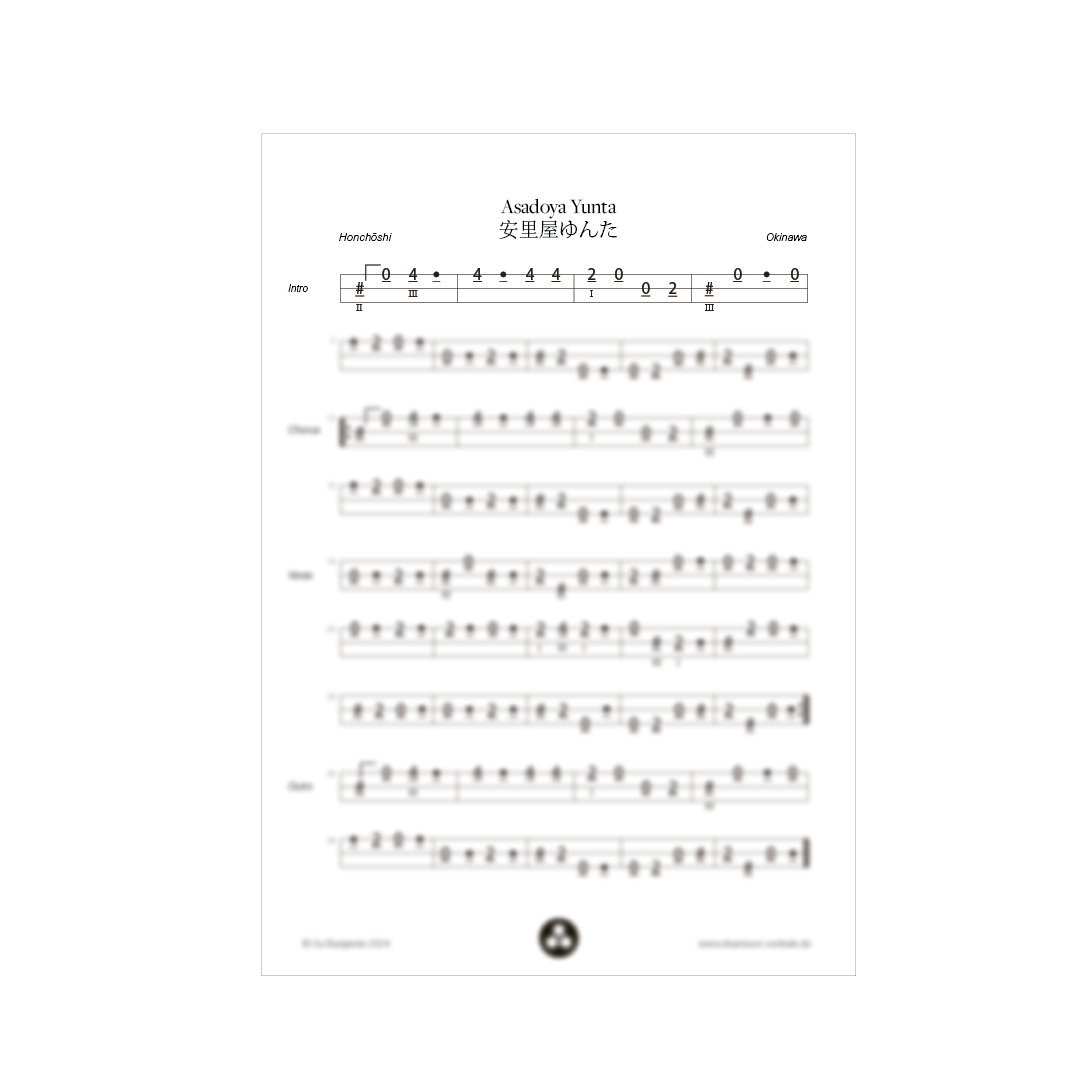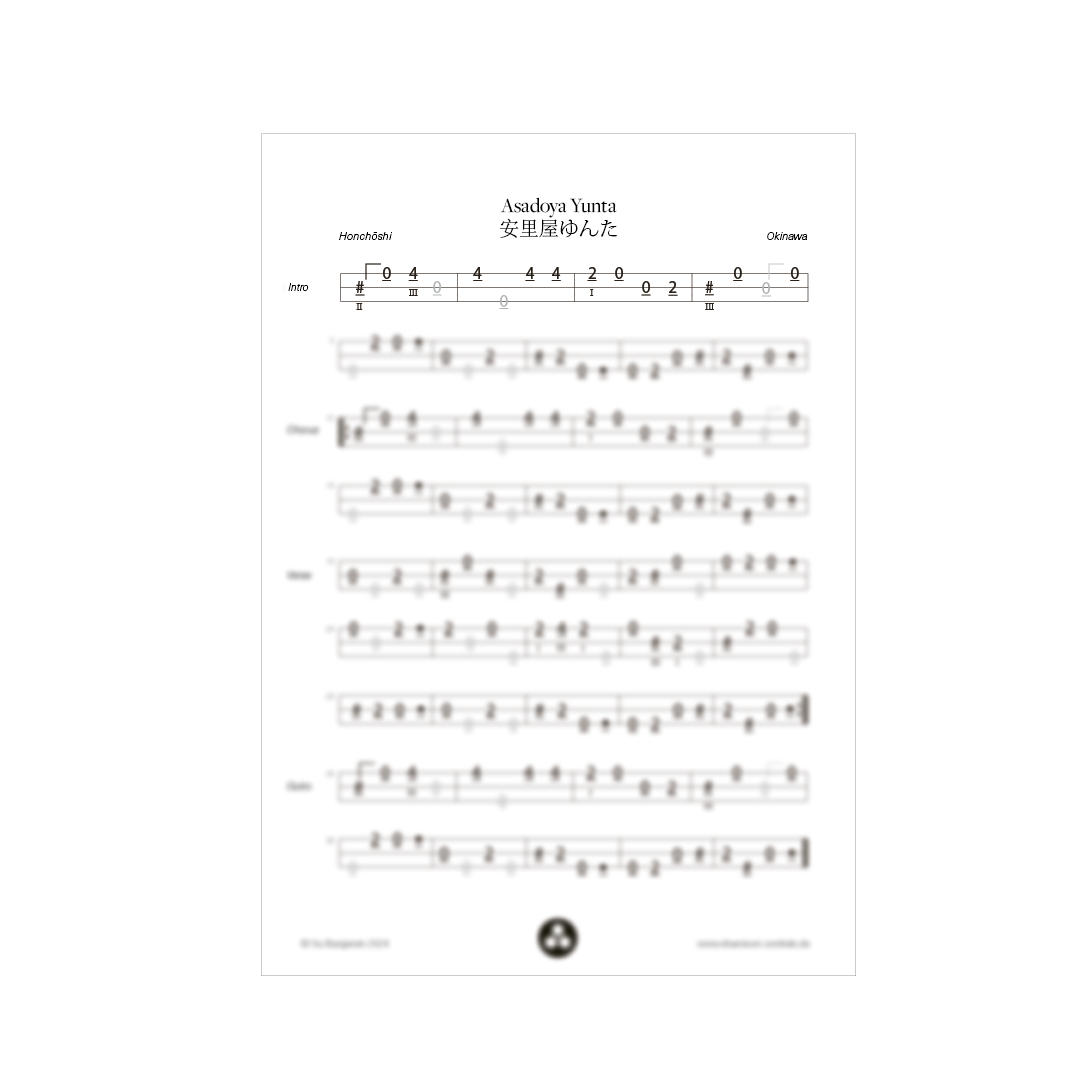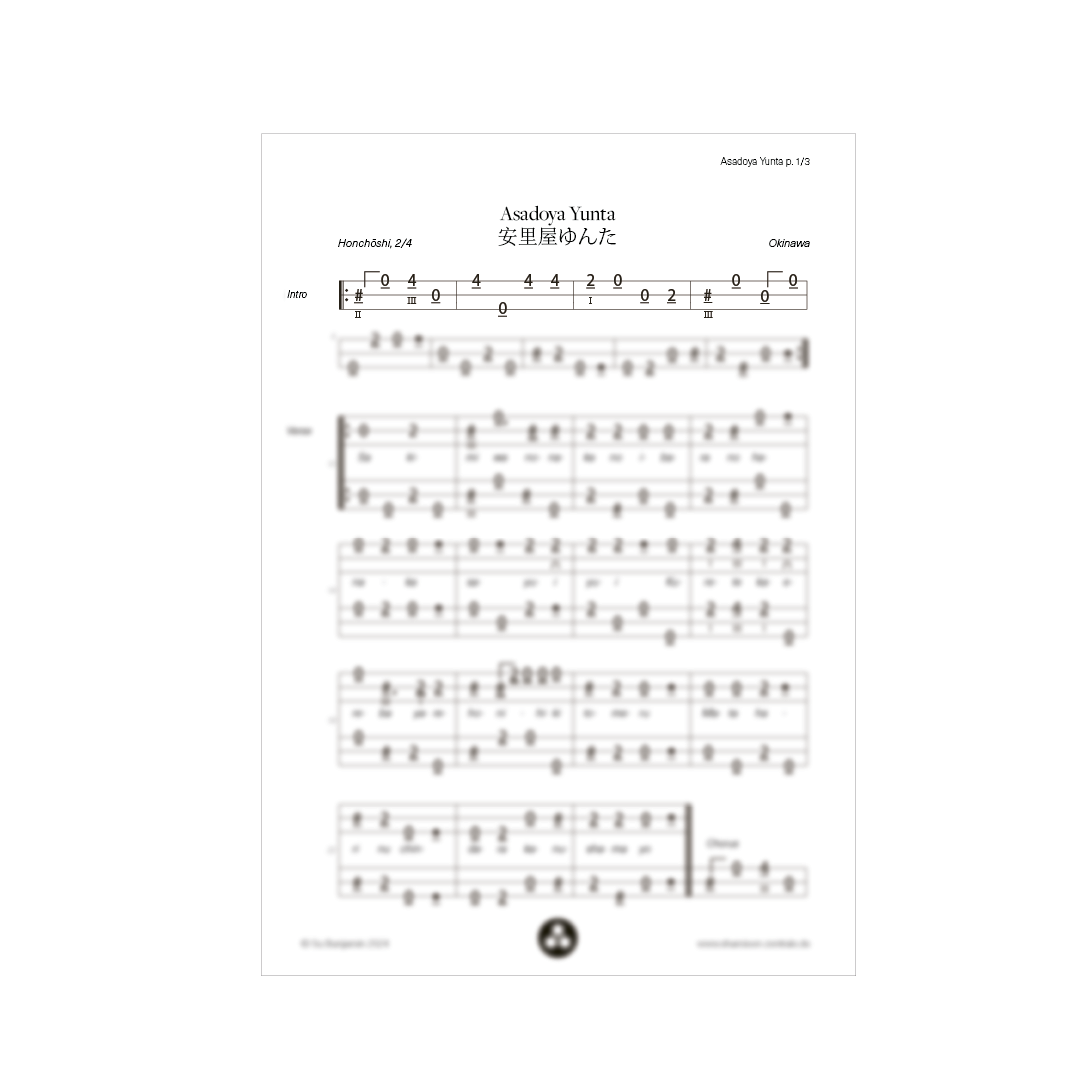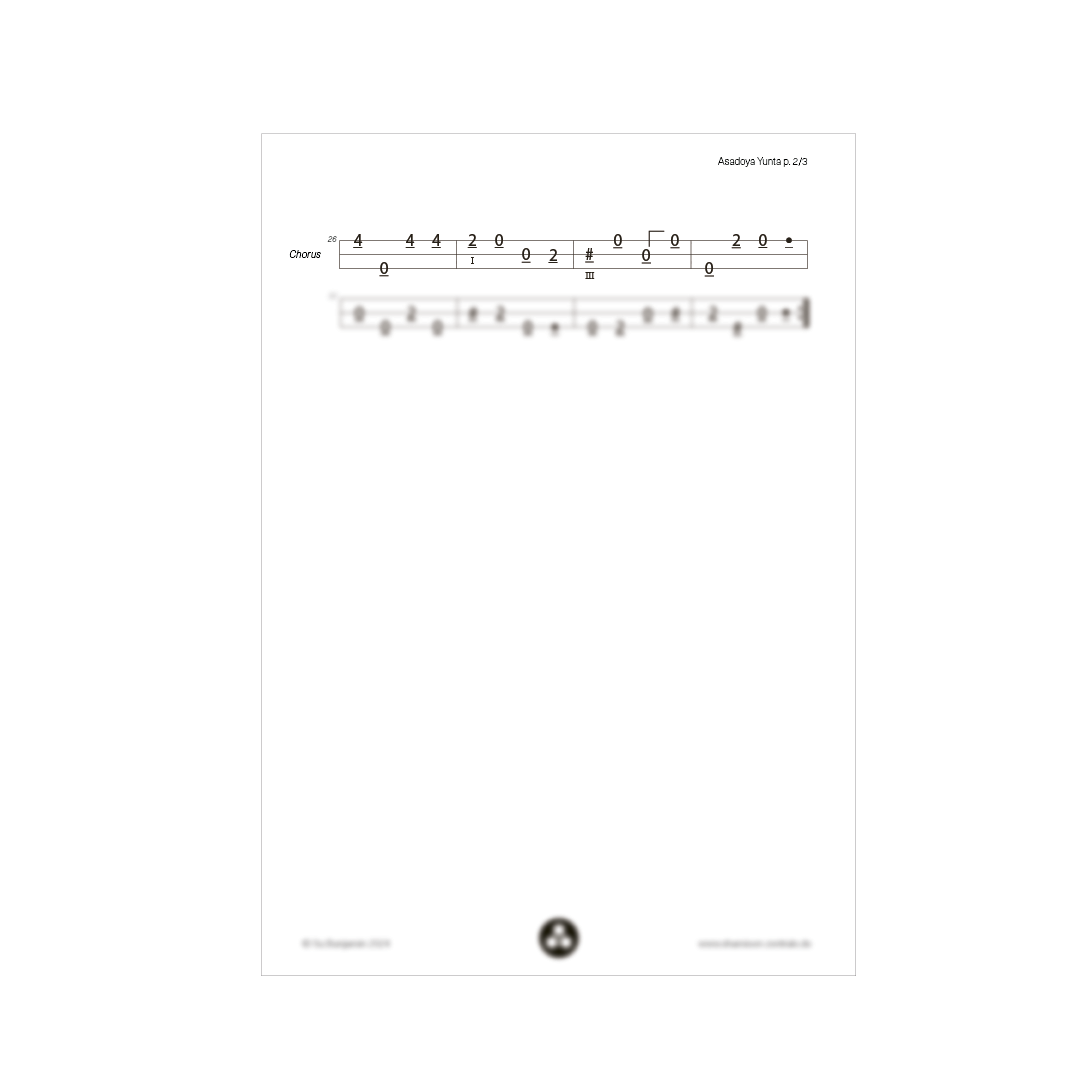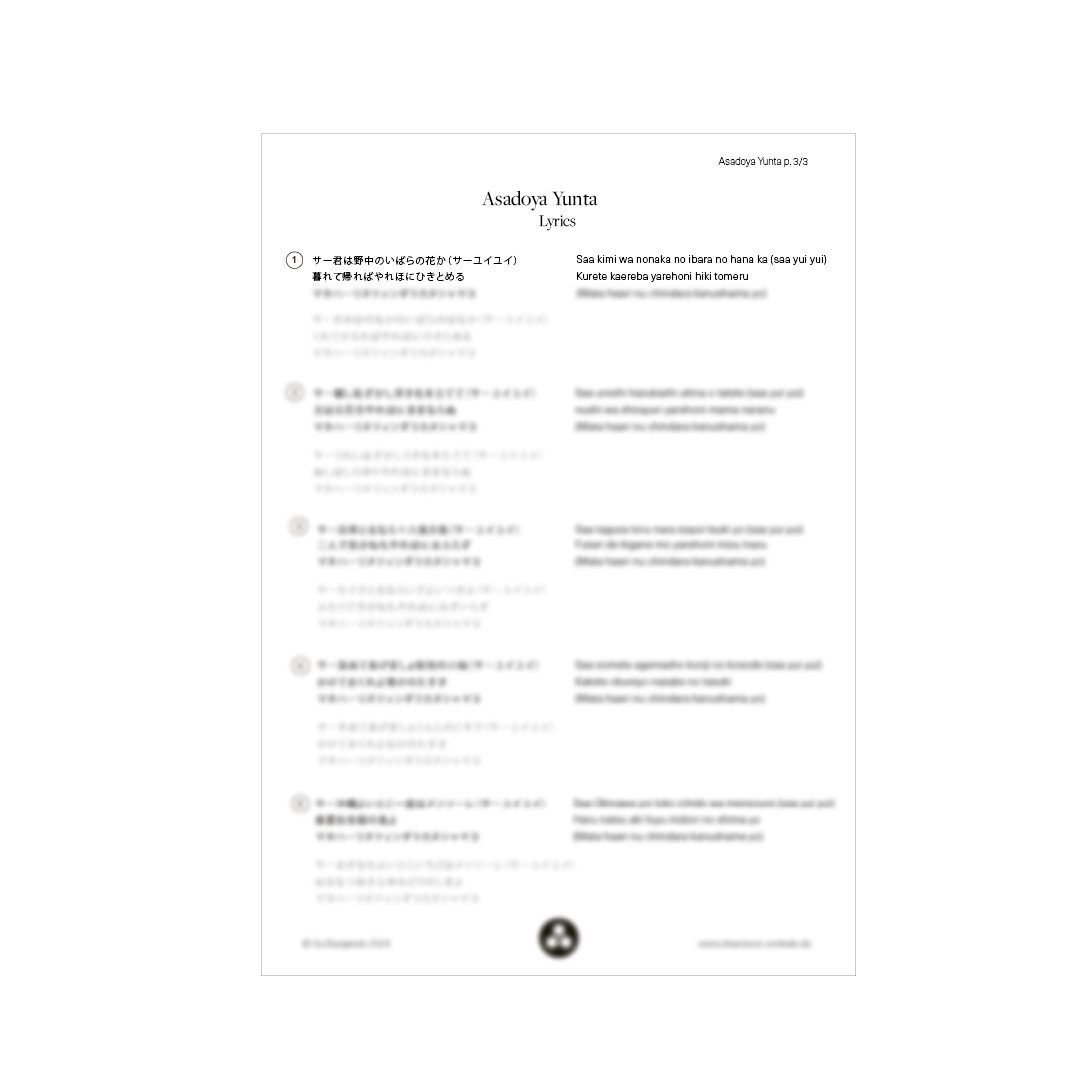Asadoya Yunta Bundle
Beginner-friendly song for shamisen.
This is what you’ll get:
- 3 pdfs with 6 pages total: tabulature notation in three versions (see details)
- 6 mp3 files: mp3 play along files in two variations in three speed versions each
Song specifications:
- beginner level
- honchōshi tuning (C-F-C)
3,95 €
Details
Get the notation for the lovely Okinawa Song “Asadoya Yunta” plus super useful play along files to help you learn and practice the song!
The song is in honchōshi tuning (C-F-C) and doesn’t require any techniques. It’s a nice song for beginners because it doesn’t use many positions on the neck, is steady and rather slow in rhythm and tempo, and has a fun vibe.
I recommend playing this song with your fingers instead of using the bachi. As this song is originally written for the Okinawan Sanshin and not for Shamisen, there’s a lot of string switching involved. That’s a lot easier to play with the fingers (and that’s how the Sanshin is played). If you want to play it with the bachi, I recommend checking out the “Melody Emphasis” and “Minimal” versions. In the “Melody Emphasis” version, I greyed out the notes that are not part of the melody so you know you can just skip them with no worries. In the “Minimal” version I took those notes out altogether and inserted rests instead.
The notation comes in four different versions: the full version without lyrics, the full version with lyrics and notated singing voice (notated in shamisen-style), a simplified version emphasizing the melody, and a minimalistic version for easy playing.
The mp3 play along files come in two different kinds: normal and minimalistic, and in three different speed versions each: 70 bpm, 90 bpm and 105 bpm.
You can download the files from your customer account page after the purchase – a link will be provided in the order confirmation e-mail.
Wanna have a short listen to see if you like the tune? Here’s the beginning of Asadoya Yunta:
Tuning:
In every tuning, the strings are tuned in a certain relation to each other. For folk songs, there’s no fixed rigid tuning to a definite pitch (in contrast, the A-string on the violin is always tuned to 440 or 442hz) but what’s most important is how the strings are tuned in relation to each other.
A good rule of thumb is to tune your instrument over the base of C. This means, the big string will be tuned to C and the other strings according to the tuning of the song:
Honchōshi: C-F-C
Niagari: C-G-C
Sansagari: C-F-Bb
Access to the pdf and mp3:
Please note that this item is downloadable once only – just as receiving a physical copy of the scores would be. Consider it a “direct delivery” 🙂
After the purchase, you can download the file from your account page under “downloads” or via the link in your order confirmation email.
Make sure you save your file in an easy to locate directory. Please don’t hesitate to contact us via email if you need further assistance.
